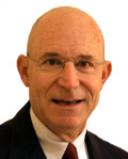Workplace Dynamics
Changing Organizations From Below
When top leadership fails to adapt to a changing world.
Posted July 10, 2024 Reviewed by Lybi Ma
Key points
- Experts in organizational behavior assert that meaningful change must be driven from the top.
- However, top executives rarely recognize the need for change before front-line employees do.
- When executives fail to adapt to a changing world, ordinary workers can exercise informal power to adapt.
- Informal power to change organizations comes from informal networking with like-minded change agents.
I’ve run big research and development labs for large companies and federal bureaucracies for decades and served in corporate innovation and consultancy for over 20 years.
My experience working to change products, processes, and people has taught me that lasting, meaningful, change only happens in two ways: top-down and bottom-up.
Top-down transformation, reengineering, disruption, or whatever buzzword is in vogue, is what they teach in business schools. In the top-down model, a tenacious leader sets a clear vision for change and then aligns the organization to achieve that vision with personnel changes, incentives, new processes, reorganization, and sustained follow-through.
Personnel changes are the most important ingredient to top-down transformation, in my view, because it’s far easier to change people than to change minds. That’s what John Reed did when he revolutionized the banking business at First National City Bank: he brought in an entire team of automotive mass manufacturing experts to replace traditional green-eye shade bankers.
The dictum ‘changing people is easier than changing minds’ is also at the heart of the alternative, bottom-up approach to lasting organizational change, because it encapsulates the most important ingredient to meaningful change: motivation of the workforce.
Strong motivations for change
When workers down in the bowels of an organization already have strong motivations for change, that motivation can be harnessed and focused to move the entire organization in healthy new directions, even when, as is almost always the case, top leadership is not motivated to make meaningful changes.
This is going to sound harsh, but the reason I’m so passionate about bottom-up change and the motivations of workers versus top executives is that leaders of big bureaucracies rarely recognize the dire need to change products, markets, or processes until it’s too late. Kodak is a good example, where leadership didn’t switch the company’s focus from chemical film to digital photography until the market had completely passed them by.
Also, C-level executives are usually people who climb to the top precisely because they excel at preventing changes in tried-and-true business practices to keep quality, cost, schedule, and earnings on the straight and narrow. Thus, top leaders, if not outright control freaks, are by nature conservative and skilled at managing risk, not radical change when radical change is called for.
But with bottom-up change, there is strong motivation to change deep down in the organization, although there isn’t formal power to bring about those changes.
However, ordinary workers possess tremendous informal power that can produce radical, lasting changes if those workers only know how to wield that power.
The story of how two CIA officers, Don and Sean, transformed the entire intelligence community is a great example of the smart use of informal power from below. With no budget, staff, or authority, working under the radar on their own time with a “rebel alliance” of like-minded officers in different agencies, they imported the Wikipedia engine into the CIA so that any officer could see an enormous range of intelligence reports that had previously been unavailable to them. Intellipedia, as the new information-sharing tool was called, revolutionized the intelligence business by letting intelligence professionals find and connect dots in ways that were previously unimaginable. [1]
When Intellipedia attracted unwanted attention because of its runaway success, organizational ‘antibodies’ couldn’t kill it because it had no staff, no budget, and no authority. Like the Internet from which it grew, Intellipedia simply was.
The key takeaway from the Intellipedia saga is that no one needed to motivate or persuade anyone to do anything. The motivation was already there deep in the hearts of change agents. All that was needed was for those agents to find and bond with like-minded employees in other organizations, and to organize their work around a shared passion, not according to hierarchical boxes.
Create a change mafia
Just as I have found that top leaders rarely embrace needed change soon enough, I have also found, that in any organization there are always highly motivated, change-craving employees across the entire enterprise who can develop informal power to effect change. These passionate people must find others with a shared passion, create a “change mafia” and work under the radar to change an organization’s course the way CIA officers Don and Sean did.
From this perspective, meaningful change is not achieved through new processes, products, people, or org charts, but through expanded and enriched relationships and networking among ordinary workers. [2]
The bottom-line message for anyone seeking to change things from below is: Don’t wait for the formal power structure to create needed change: they rarely will. Rather, acquire and wield informal power to change things by finding and nurturing relationships with people who have the same motivation you do.
This idea didn’t come into sharp focus during my management consulting work, but—strangely enough—through recent conversations with my wife, mind-body physician Chris Gilbert, MD, Ph.D. She developed novel ways to manage hard-to-treat illnesses such as chronic fatigue syndrome by listening to patient’s bodies, not just their minds, in working up treatment plans. [3]
Dr. Gilbert has learned, that like low-level employees in an enterprise, different organs, muscles, and tissues ‘want’ positive change and can bring about those changes by telling the brain when they are suffering. By paying close attention to these messages from our bodies, our minds can learn how to improve our health.
In a literal sense then, positive change in both the health of individuals and the health of organizations can occur not when the ‘top’ tells the ‘bottom’ what to do—because that seldom causes lasting change—but when the ‘bottom’ decides all on its own the best direction to take.
And in enterprises, as in personal health, changing in the right direction can spell the difference between life and death.




